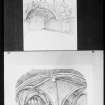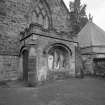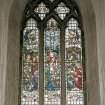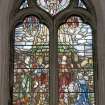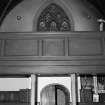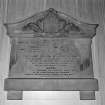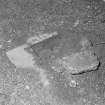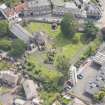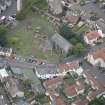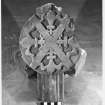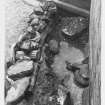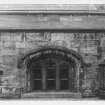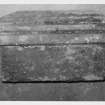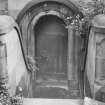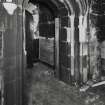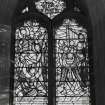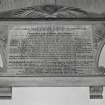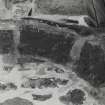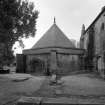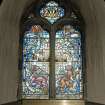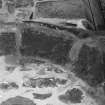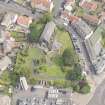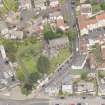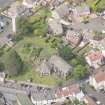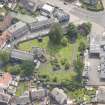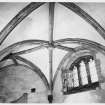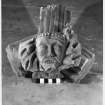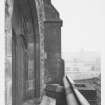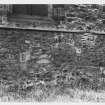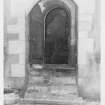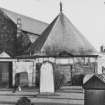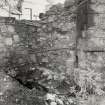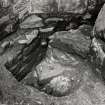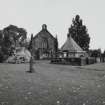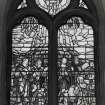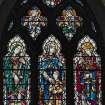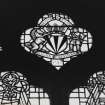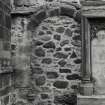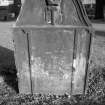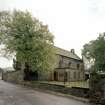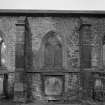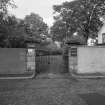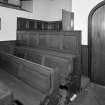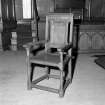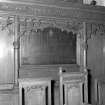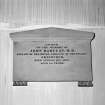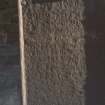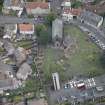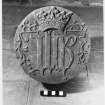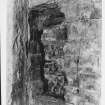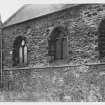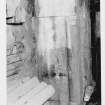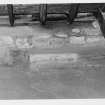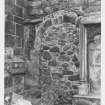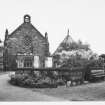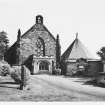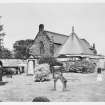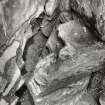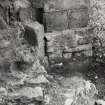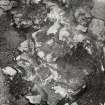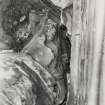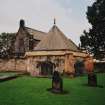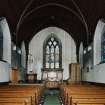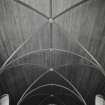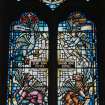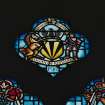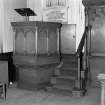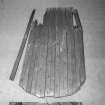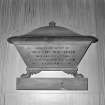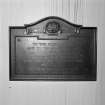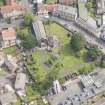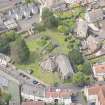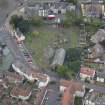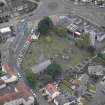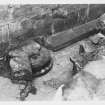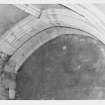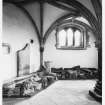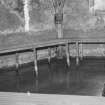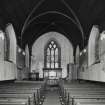Edinburgh, Restalrig Road South, Restalrig Parish Church
Architectural Fragment(S) (Medieval), Church (15th Century), Font (13th Century), Gatehouse (19th Century), War Memorial (20th Century)
Site Name Edinburgh, Restalrig Road South, Restalrig Parish Church
Classification Architectural Fragment(S) (Medieval), Church (15th Century), Font (13th Century), Gatehouse (19th Century), War Memorial (20th Century)
Alternative Name(s) St Triduanas Well; 7 Restalrig Road South; St Margaret's Church; Restalrig Avenue; War Memorial Screen
Canmore ID 52103
Site Number NT27SE 103
NGR NT 28337 74483
Datum OSGB36 - NGR
Permalink http://canmore.org.uk/site/52103
First 100 images shown. See the Collections panel (below) for a link to all digital images.
- Council Edinburgh, City Of
- Parish Edinburgh (Edinburgh, City Of)
- Former Region Lothian
- Former District City Of Edinburgh
- Former County Midlothian
NT27SE 103.00 28337 74483.
NT27SE 103.01 NT 28332 74468 Chapel (St Triduana's Aisle)
NT27SE 103.02 NT 2835 7447 Jougs
NT27SE 103.03 NT 283 744 Gatehouse; Watching Brief
NT27SE 103.04 NT 28314 74452 Churchyard
(NT 2833 7447) Restalrig Church (NR) formerly
Collegiate Kirk of the Holy Trinity and St Mary (NR)
OS 1:1056, (1853).
On being rebuilt in 1487, the old parish church of Restalrig, which is on record in the 12th century, was erected by James III into a collegiate establishment known as the Deanery of Restalrig. In 1560, the General Assembly ordered that it should be destroyed, and thereafter its ruins served as a quarry. Some parts of the choir walls, however, were not destroyed, and these were restored in 1836 to make the church of a quod sacra parish. As it stands now, the building is featureless, with few traces of its 15th century origin.
RCAHMS 1951; D E Easson 1957.
This church, which is still in use, has been much restored. Externally, it is of little architectural value.
Visited by OS (SFS) 3 December 1975.
NT 2832 7448 A watching brief was kept during the removal of tarmac and other modern materials outside the W end of the parish church before new flagstones were laid over the area. Immediately below the tarmac were the remains of two mortar-bonded rubble walls, which pre-dated the extant 19th-century building and probably also its 15th-century predecessor.
Several disarticulated human bones, uncovered to the immediate S of the walls, are thought to have resulted from the disturbance of two burials by a recently cut drainage trench.
Sponsors: Minister and Kirk Session of St Margaret's Parish Church, Restalrig.
J Terry 2002
1487
NMRS Reference.
Edinburgh, Restalrig Road South, Restalrig Church.
Architect: William Burn 1837, (restoration).
George D. McNnen - Upper Hall - erected 1913.
Messrs Rigg, Brown & Sproul - Church Centre -
completed 1977.
Sydney Mitchell & Wilson - ready for occupation in 1895.
Information from Mr. Weir.
NMRS Reference.
Edinburgh, Restalrig Road South, Restalrig Church (old).
National Library of Scotland.
Uncatalogued MSS of General Hutton No. 85, Vol. 1.
Plan of the Old Church - no scale.
Publication Account (1951)
220. Parish Church, Restalrig.
On being rebuilt in 1487, the old parish church, which appears on record as early as the 12th century, was erected by King James III into a collegiate establishment known as the Deanery of Restalrig (1). At the Reformation it was the first church in Scotland to suffer. On 21st December 1560 the General Assembly directed ‘that the kirk of Restalrig, as a monument of idolatrie, be raysit and utterlie castin downe and destroyed’ (2), and thereafter its ruins served as a quarry. In 1571 some of the stones which had already been removed to Edinburgh for house building were diverted to the reconstruction of the Nether Bow Port (3). Some parts of the choir walls, however, escaped destruction, and these were restored in 1836 to make the church of a quoad sacra parish.
As it stands to-day this building is featureless and shows few traces of its 15th-century origin. It is built of rubble, the lower part of the walls being offset, with buttresses of ashlar, the south-easternmost of which exhibits a weatherworn panel carved with a shield surmounted by a crown, the arms and supporters being wholly illegible. There were no windows in the N. wall, and three built-up doorways in the lower part of it seem to be late insertions. The E. window and three of the four windows facing S., as well as a built-up doorway on the S. side, which has a semicircular head and is enriched with small carved paterae, all date from 1487. Attached to the S.W. angle of the church is St. Triduana's Well, a most interesting piece of architecture, which originally formed the undercroft of St. Triduana's Chapel [NT27SE 103.01]. The Chapel was already in existence some ten years before the church itself came to be rebuilt. Prior to its restoration in 1907 the little building had been thought to be either a chapter-house or a burial-vault, but the excavation then made revealed its purpose as a ‘Balm Well’* and disclosed evidence of there having been an upper storey, obviously the ‘Upper Chapel’ endowed by King James III in 1477 (4). In the restoration** only the undercroft could be taken in hand, as certain evidence essential to the rebuilding of the superstructure was lacking.
Built partly below ground, the structure is hexagonal on plan, the external diameter measuring 36 ft. 6 in. The masonry is ashlar. Each angle has been reinforced by a projecting buttress. In each of the three S. sides is a late Gothic window, its sill level with the ground outside. These windows are mullioned and the reprises are unusually high. Their heads are three-centred, a form not commonly seen in Scotland, and they contain moulded and cusped tracery in which the eyes are unpierced. Their jamb-section is chamfered and quirked. The original entrance in the N.W. wall has been rebuilt. The N. wall contains a wide built-up doorway which once led from the church. There is no opening in the N.E. wall, which must therefore have abutted against some other structure. The outer side of the E. wall partly overrides a moulded base of 13th-century date, apparently the only vestige of the first building.
The undercroft and the upper chapel were both vaulted, and the lower of the two rib-vaults, which is still extant, is possibly the most interesting feature of the interior. There is a central pier, composed of clustered shafts with fillets, and within each angle of the cell a wall-shaft rises as a respond. The method by which a polygonal building is normally vaulted is to spring vault-ribs in semicircular or pointed arcs from pier to wall-shaft, but here the arcs are sprung instead from the wall shaft at one angle to that at the angle opposite, while the mid- or ridge-rib first runs horizontally to an intermediate boss and then sweeps downwards to the capital of the pier. Four of the vaulting bosses are foliaceous, while two others have shields, both uncarved. The mouldings and carved work on the ribs, capitals and bases are characteristic of the third quarter of the 15th century. On each wall is a stone bench, to the top of which the water now frequently rises.
According to Arnot (5), who wrote in 1788, the place had been used for burial some centuries earlier. An interesting sepulchral slab can be seen built into the N.E. wall, but this stone is not in its original position and may have been brought in from outside. Below the initials I K is incised a shield parted per pale and charged: Dexter, quarterly, 1st and 4th three piles in point, for Logan, 2nd, an eagle displayed, for Restalrig, 3rd, three papingoes, for Pepdie and Home; sinister, on a chevron, three mullets, for Ker. Round the margin runs an inscription, the last two lines of which are cut below the first one, with the result that the breakage of the left-hand top corner has led to the loss of some words in all three. The missing words are, however, on record, (6) and when they are supplied the whole reads: [HERE LYETH] ANE / HONORABLE LADY IONET KER / LADY RESTAL/RIG QVHA DEPAERTIT YIS L[YFE / 12 DAY OF M]AII / [ANNO 15]96. In describing the stone (7) the late Mr. William Douglas pointed out that the date as given above seemed to identify the deceased as the second wife of the Gowrie conspirator, Robert Logan, seventh laird of Restalrig.
ARCHITECTURAL FRAGMENTS.
Within the roof space above the rib-vault are preserved a number of carved and moulded fragments, evidently part of the upper chapel. Others are grouped outside the entrance, but the most noteworthy have been placed within the undercroft. The collection includes:
(1) Moulded bases, and sections of window tracery.
(2) A vaulting boss with a star of five points enclosed by stiff, conventional foliage.
(3) Another boss with a shield similarly enclosed, on which the letters I M, for Iesus Maria, appear in monogram, beneath a crown and flanked by two doves.
(4) A third boss similar to the last with the letters I H S beneath a crown.
(5) A fourth boss, bearing a saltire cantoned with four fleurs-de-lys, the arms of Kelly of that Ilk.
(6) A- grotesque head.
FONT. An interesting font of the 13th century, which lay for many years in the courtyard of Craigentinny House (RCAHMS 1951, No. 231), has recently been restored to the church. It is in the form of a drum of stone with four projecting lugs, and measures 1 ft. 6 in.in diameter by 1 ft. in height. The bowl is 1 ft. ½ in.in diameter and 8½ in. deep. The drum has been designed to stand on a circular shaft.
JOUGS [NT27SE 103.02]. In the boundary wall S.E. of the church is a built-up and incomplete gateway of the 17th century, to one jamb of which is attached a pair of jougs with a modern collar.
TOMBSTONES NT27SE 103.04. The churchyard contains a late 17th- or early 18th-century table-stone, and two headstones of the same time. None of the inscriptions is legible.
RCAHMS 1951, visited c.1941
(1) Laing, Collegiate Churches, pp. iv and xiv. (2) The Rooke of the Universall Kirk of Scotland, p., 5. (3) Diurnal, p. 241. (4) Laing, op. cit., p. xlv. (5) History, p. 257. (6) Laing, op. cit., p. lxi, where the date has been read incorrectly. (7) P.S.A.S., lxii (1927-8),pp. 27-35.
*Traditionally Restalrig was not only the scene of St.Triduana's life but also her burial-place. After her death it became a pilgrim resort for those afflicted with diseases of the eyes, and as late as the 16th century Sir David Lindsay speaks of people going there "to mend their ene".
**Of which a full account will be found in the Transactions of the Scottish Ecclesiological Society, iii, pp. 238 ff.
Project (1997)
The Public Monuments and Sculpture Association (http://www.pmsa.org.uk/) set up a National Recording Project in 1997 with the aim of making a survey of public monuments and sculpture in Britain ranging from medieval monuments to the most contemporary works. Information from the Edinburgh project was added to the RCAHMS database in October 2010 and again in 2012.
The PMSA (Public Monuments and Sculpture Association) Edinburgh Sculpture Project has been supported by Eastern Photocolour, Edinburgh College of Art, the Edinburgh World Heritage Trust, Historic Scotland, the Hope Scott Trust, The Old Edinburgh Club, the Pilgrim Trust, the RCAHMS, and the Scottish Archive Network.
Watching Brief (23 November 1998 - 27 November 1998)
NT 283 744 A watching brief was carried out at Restalrig Parish Church (NMRS NT 27 SE 103.00) in November 1998, during the excavation of two pipe trenches in the vicinity of the gatehouse.
The gatehouse is an 18th-century building with 19th-centuryadditions.The shallow nature of the pipe trenches meant that no archaeological deposits of pre-19th-century date were disturbed,and no finds were retained. A number of fragments of human remains were revealed: these were reburied.
D Stewart 1999
Sponsor: NTS
Kirkdale Archaeology
Field Visit (10 October 2002)
Fibreglass statue of St Triduana, standing, wearing full-length drapery and holding a thorny twig.
(The wooden original, holding in front of her a thorn on which an eyeball is impaled, is now in the chapel.)
The building housing the well was erected around 1438 by Sir Robert Logan when his family owned the Barony of Restalrig. It was built with two storeys, the upper one was a chapel, and the lower one contained the well where pigrims came to bathe their eyes. In 1906 the building was renovated under the direction of the Earl of Moray. The steeply pitched roof was added by Thomas Ross. The statue was presumably added at this time.
In 1992 the original was removed from the roof and placed inside the chapel. A fibreglass replacement was made by Stephen Gordon, conservationist at Historic Scotland.
According to the breviary of Aberdeen, Triduana was born at Colosse and accompanied St Rule on his journey to Scotland (about A.D. 337) with the bones of St Andrew. At Rescobie in Angus, she settled into a life of religious seclusion. Whilst there she came to the attention of Nectan, a Pictish chief, who asked her to be his wife. Realising that it was her eyes that had attracted the chief, Triduana tore them out with a thorn and sent them to him. She moved to Restalrig where she healed the blind.
St Triduana's Well was a place of pilgrimage for people with eye complaints.
Inspected By : D. King
Inscriptions : None Visible
Signatures : None Visible
Design period : Well c.1438 / restored 1906
Year of unveiling : 1906
Unveiling details : 1906
Information from Public Monuments and Sculpture Association (PMSA Work Ref : EDIN1018)










































































































